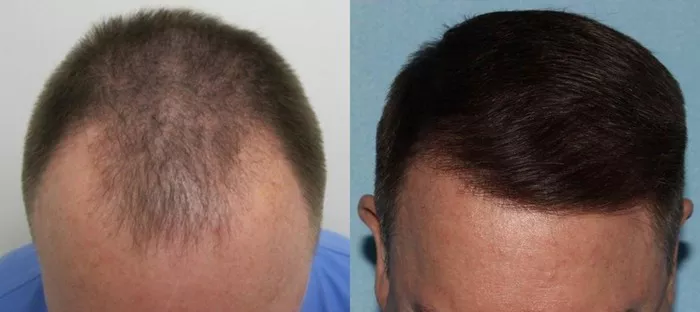When it comes to regaining a full head of hair through a hair transplant, one of the most common questions is, “How long does it take for the transplanted hair to grow?” Understanding the timeline of hair growth after a transplant is essential for managing expectations and planning your journey to hair restoration. In this article, we will delve into the details of the post-transplant hair growth process, shedding light on the key factors and stages involved.
1. Initial Recovery: The First Few Days After Surgery
After undergoing a hair transplant procedure, the initial phase involves recovery, which is crucial for the success of the transplant. Here’s what to expect during this stage:
a. Immediate Results: Right after the surgery, you won’t see any new hair growth. In fact, the transplanted area may look red, swollen, and slightly bruised.
b. Scab Formation: Small scabs will develop at the transplant site, which is entirely normal. These scabs will naturally shed within a week or two.
c. Patience is Key: Understand that the immediate post-surgery appearance is not indicative of the final results. Patience and proper care are essential.
2. The Waiting Game: First Few Weeks to Months
The real transformation in hair growth begins after the initial recovery phase. During this period, the transplanted follicles start to settle and prepare for new growth:
a. Temporary Shedding: It’s common for the newly transplanted hair to fall out within the first few weeks. This is known as “shock loss” and is a temporary setback.
b. Follicle Activation: Over the next three to four months, the transplanted hair follicles enter a dormant phase, and then they gradually start to activate.
c. Growth Begins: Around the four-month mark, you’ll start to notice the first signs of new hair growth. These hairs may be fine and thin initially.
3. Progress and Patience: 6 to 9 Months Post-Transplant
As you approach the half-year mark after your hair transplant, your patience will be rewarded with more noticeable hair growth:
a. Improved Density: The hair will continue to thicken and increase in density as it grows longer. By this time, the changes will be visible to others.
b. Hair Length: The length of the transplanted hair can vary, but it generally grows at an average rate of half an inch (1.25 cm) per month.
c. Natural Appearance: The transplanted hair will blend seamlessly with your existing hair, providing a natural and undetectable result.
4. Near the Finish Line: 12 to 18 Months After the Procedure
At the one-year mark, you will witness significant progress in your hair transplant results:
a. Full Results: Most patients will achieve their full hair transplant results within 12 to 18 months after the surgery.
b. Thickness and Volume: By this time, the transplanted hair will be as thick and voluminous as the rest of your hair.
c. Permanent Growth: The transplanted hair is permanent and should last a lifetime. It is not subject to the effects of male or female pattern baldness.
5. Maintenance and Long-Term Care
After the successful completion of a hair transplant, it’s crucial to maintain your results and care for your newly restored hair:
a. Hair Care Routine: Continue to maintain a healthy hair care routine to ensure the longevity of your transplanted hair.
b. Regular Check-ups: Periodic visits to your hair transplant specialist are advisable to monitor the progress and address any concerns.
c. Medications and Supplements: Some individuals may be prescribed medications or supplements to support long-term hair health.
6. Factors Influencing Hair Growth After a Transplant
Several factors can affect the timeline of hair growth after a transplant:
a. Individual Variation: The rate of hair growth varies from person to person, and genetic factors play a role.
b. Transplant Method: The type of transplant procedure (FUE or FUT) can impact the timeline.
c. Health and Lifestyle: Good overall health and lifestyle choices can promote faster and healthier hair growth.
See Also: How Long Until Hair Transplant Grafts Secure: A Full Guide
In conclusion
The timeline for hair growth after a transplant can be broken down into distinct stages, beginning with the immediate recovery phase, followed by gradual progress over the course of a year or more. It’s essential to remain patient and understand that visible results may take time. The final outcome is typically worth the wait, offering a natural and permanent solution to hair loss. To ensure the best results, consult with a qualified hair transplant specialist who can provide personalized guidance based on your unique needs.


